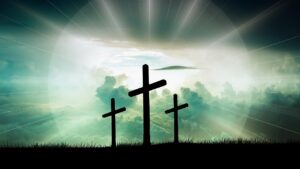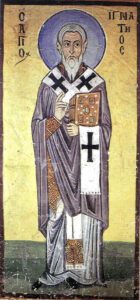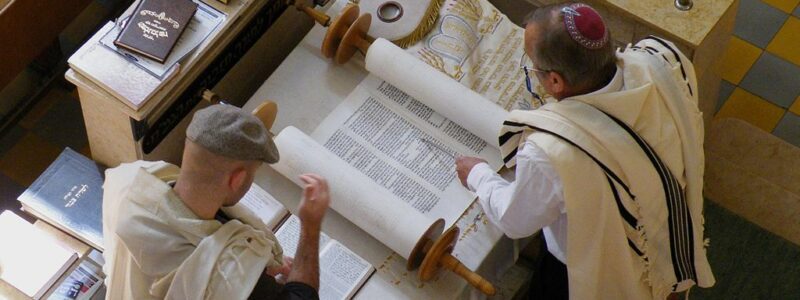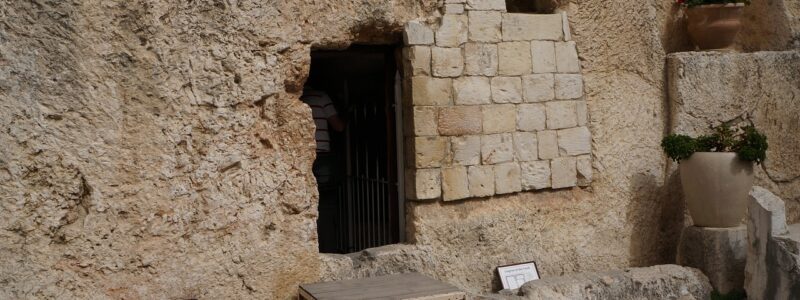Three Days and Nights
 Most Christians believe Christ was crucified on a Friday and rose from the dead after three days and nights. Other believers put forth other crucifixion days including Thursday and Wednesday. There is consensus that Christ arose on a Sunday morning based on Matthew 28:1 which notes,
Most Christians believe Christ was crucified on a Friday and rose from the dead after three days and nights. Other believers put forth other crucifixion days including Thursday and Wednesday. There is consensus that Christ arose on a Sunday morning based on Matthew 28:1 which notes,
Now after the Sabbath, as the first day of the week began to dawn, Mary Magdalene and the other Mary came to see the tomb.
The problem arises concerning the amount of time Christ spent in the grave. How could he have spent three days and nights in the grave if he were crucified on Friday and then arose on Monday? The Scriptures go on to say,
Then, as they were afraid and bowed their faces to the earth, they said to them, “Why do you seek the living among the dead? He is not here, but is risen! Remember how He spoke to you when He was still in Galilee says, ‘The Son of Man must be delivered into the hands of sinful men, and be crucified, and the third day rise again (Luke 24:5-7)
They will courge Him and kill Him. And the third day He will rise again. (Luke 18:33)
For as Jonah was three days and three nights in the belly of the great fish, so will the Son of Man be three days and three nights in the heart of the earth. (Matthew 1240).
The problem is further complicated by the unique timing situation of the time Christ was crucified. He apparently ate the “Last Supper”, a Passover meal, on a Thursday, not the usual Passover. We know from the Scriptures that the Passover was celebrated by the Jews on the day after Christ celebrated the Passover meal with his disciples. What is going on here!
Another part of the confusion is that most Christians are very unfamiliar with Jewish traditions and holy days. This is further complicated by the fact that these days might have been celebrated somewhat differently in ancient Israel. Finally, the usual Jewish day begins at sundown – not at midnight which is the usual tradition in the modern world. This means the Jewish day will begin on the day previously on the Christian calendar. The Scriptures allude to several holy days all occurring at the same time. There was Passover, the usual Sabbath, Unleavened Bread, and First Fruits. Each of these holidays was started centuries earlier in Leviticus while Moses and the children of Israel were out in the desert establishing their covenant with God.
The problem is that most Christians are unfamiliar with these holidays and may not even have heard about them.
It is a puzzle wrapped up in an enigma.
There are solutions to this riddle, and what we will propose is the most likely solution that agrees with all the facts. It does require some digging, and understanding of ancient Jewish customs as they differed in northern Israel (Galilee) and southern Israel.
Counting Days in Scripture

Counting Days in Scripture
It is usually best to let the Scriptures speak for themselves when trying to figure out a seeming puzzle – there is a solution for something as significant as the number of days Christ was buried.
First, we need to understand most Jews count their days as beginning at sunset in the evening and then ending the following evening. So what we might reckon as Thursday evening might actually be Friday morning for the Jews.
Many ancient cultures counted their days in this fashion. It seems to make more sense to count the beginning and end of the day with the setting of the sun than with some arbitrary time. The ancient Jews did not have watches on their wrist or clocks in the houses. The ancient Jews did have the ancient clock of the setting and rising of the sun which was available for free for everybody.
One of the biggest clues as to how the Scriptures count time is in the Book of Esther. Interestingly, this book was not included in the Old Testament canon as God is not mentioned. It occurs at a time when the Jewish people are in captivity in Persia (or in modern Iran). Many of the captivated Jews had lived all their lives in Persia by the time of Esther and had become assimilated into their culture. Esther is a young woman at this time who was chosen by the King to be his Queen. Esther is still Jewish but primarily in an ethnic capacity rather than in a religious one.
Esther had to intervene in a time of potential national disaster for the Jewish people. The King had pronounced a death sentence upon the entire Jewish population after trickery from one of his consultants. It fell to Esther, an unlikely character to be sure, to save her people. She would ultimately succeed, but she had to risk her life in the process. It is a grand drama played out through the pages of an obscure book.
While preparing for her plea with the King to spare her people, she wants the Jews to the fact,
Neither eat nor drink for three days, night or day.
Two verses later, the narrative goes on,
Now it happened on the third day day that Esther put on her royal robes and stood in the inner court of the king’s palace.
Most readers race by this verse without realizing its significance. If three days and nights are counted the same way we do today, then why would Esther see the King before the end of the three-day fast or on the fourth day!
This whole timing is remarkably analogous to the time interval between Christ’s Crucifixion and Resurrection.
According to this counting structure, Christ died on Friday, day one; the day includes the entire “day” including the night before. Saturday was day two, consisting of both day and night, and Sunday was day three likewise consisting of day and night. This means that by the Jewish calendar using a different method of counting days, the biblical problem disappears.
Potential Problems

Sheep were killed from about 3 to 5 o’clock on the Preparation Day before Passover.
There are potential problems with this schema that will need to be addressed. Jesus died on the “Preparation Day”, the day before the Sabbath (Mark 15:42). This means that Christ and the Apostles ate the Last Supper the day before the regular Passover meal. John MacArthur tries to solve this dilemma this way,
The chronological reckoning between John’s gospel and the synoptic presents a challenge, especially in relation to the time of the Last Supper. While the synoptic portray the disciples and the Lord at the Last Supper as eating the Passover meal on Thursday evening (Nisan 14) and Jesus being crucified on Friday, John’s gospel states that the Jews did not enter into the Praetorium “lest they should be defiled, but that they might eat the Passover”. So, the disciples had eaten the Passover on Thursday evening but the Jews did not., In fact, John (19:14) states that Jesus’ trial and crucifixion were on the day of Preparation for the Passover and not after the eating of the Passover, so that with the trial and crucifixion on Friday, Christ was actually sacrificed at the same time the Passover lambs were being slain (19:14). The question is, “Why did the disciples eat the Passover meal on Thursday?”
The answer lies in a difference among the Jews in the way they reckoned the beginning and end of days. From Josephus, the Mishna, and other ancient Jewish sources we learn that the Jews in northern Palestine calculated days from sunrise to sunrise. That area included the region of Galilee, where Jesus and all the disciples, except Judas, had grown up. Apparently, most, if not all, of the Pharisees used that system of reckoning. But Jews in the southern part, which centered in Jerusalem, calculated days from sunset to sunset. Because all the priests necessarily lived in or near Jerusalem, as did most of the Sadducees, those groups followed the southern scheme.
That variation doubtlessly caused confusion at times, but it also had some practical benefits. During Passover time, for instance, it allowed for the feast to be celebrated legitimately on two adjoining days, thereby permitting the temple sacrifices to be made over a total period of four hours rather than two. That separation of days may also have had the effect of reducing both regional and religious clashes between the two groups.
On that basis, the seeming contradictions in the gospel accounts are easily explained. Being Galileans, Jesus and the disciples considered Passover day to have started at sunrise on Thursday and to end at sunrise on Friday. The Jewish leaders who arrested and tried Jesus, being mostly priests and Sadducees, considered Passover day to begin at sunset on Thursday and end at sunset on Friday. By that variation, predetermined by God’s sovereign provision, Jesus could thereby legitimately celebrate the last Passover meal with His disciples and yet still be sacrificed on Passover day.
This solution explains how the Jews could celebrate the Passover meal on two different, successive days depending on which portion of Israel they originated.
The Year of the Passover and the Crucifixion

Understanding the Jewish calendar is important in solving the Passover puzzle.
I have a post specifically devoted to the determination of the most likely date for the Crucifixion. This date is the center of time for humanity and so its determination should be fairly straightforward to determine with a significant amount of secondary, extra-Biblical evidence.
There is a majority opinion that Christ was crucified on a Friday, the day of Preparation for the Sabbath as recorded in Scripture. Since the Sabbath that year also fell during Passover week, it was considered a High Sabbath (High Day). There is no other usage in Scripture or in any other Jewish writing which refers to “Preparation Day” as anything but the day before the weekly Sabbath.
Suffice it to say that the Passover always occurs on Nisan 14 in the Jewish calendar, and there is only one year in the possible timeframe of the crucifixion which meets all the criteria. The most likely date for this event is April 3, 33 AD. This is important because it meant that Christ’s death at 3 PM on April 3, 33 AD was at the same time the Passover lambs were being killed for that evening’s Passover meal.
Three Days and Nights
With the likely date in mind, we can now return to the problem of “three days and three nights” and how this might be accomplished in the time allowed.
Old Testament Jewish culture equates “three days and three nights” with “on the third day.” There is clear Biblical evidence in the Book of Esther that this is true when Esther states,
Go, gather all the Jews who are present in the Shushan, and fast for me; neither eat nor drink for three days, night or day. My maids and I will fast likewise. And so I will go to the king, which is against the law; and if I perish, I perish! (Esther 4:16)
Therefore, if these days and nights were counted in a manner consistent with modern convention, then Esther would be going to see the King on the fourth day, after three days and three nights. But this is not what happened,
Now it happened on the third day that Esther put on her royal robes and stood in the inner court of the king’s palace, across from the king’s house, while the kind sat on his royal throne in the royal house, facing the entrance of the house. (Esther 5:1).
There is another example of three days and nights being equivalent to the “third day.” This particular example is in the New Testament,
Saying, “Sir, we remember while He was still alive, how that deceiver said, “After three days I will rise.” Therefore command that the tomb be made secure until the third day, lest His disciples come by night and steal Him away, and say to the people, “He has risen from the dead.” So the last deception will be worse than the first.”
If the chief priests and the Pharisees had counted the days in the Western fashion, they would have wanted the tomb to be secured until the fourth day. The many passages of Scripture concerning Christ’s death all speak about “three days and three nights” and “on the third day” suggesting these time frames are identical.
Ancient Church Fathers’ Opinion on Thre Days and Nights

By Anonymous – Chatzidakis. Byzantine Art in Greece, Public Domain, Link
Ignatius was a disciple of the Apostle John and presumably had a good understanding of the most important event in the Christian church. He noted,
He also rose again in three days, the Father raising Him; and after spending forty days with the apostles, He was received up to the Father, and “sat down at His right hand, expecting till His enemies are placed under His feet.” On the day of preparation, then, at the third hour, He received the sentence from Pilate, the Father permitting that to happen, at the sixth hour He was crucified; at the ninth hour He gave up the ghost, and before sunset, He was buried. During the Sabbath, He continued under the earth in the tomb in which Joseph of Arimathaea had laid Him. At the dawning of the Lord’s day, He arose from the dead, according to what was spoken by Himself, “As Jonah was three days and three nights in the whale’s belly, so shall the Son of man also be three days and three nights in the heart of the earth.” The day of the preparation, then, comprises the passion; the Sabbath embraces the burial; the Lord’s Day contains the resurrection.
Iranaeus also equated three days and three nights the same way,
And the Lord Himself says, “As Jonas remained three days and three nights in the whale’s belly, so shall the Son of man be in the heart of the earth.” Then also the Apostle says, “But when He ascended, what is it but that He also descended into the lower parts of the earth?” This, too, David says when prophesying of Him, “And thou hast delivered my soul from the nethermost hell”; and so His rising again the third day, He said to Mary, who was the first to see and to worship Him, “Touch Me not, for I have not yet ascended to the Father; but go to the disciples, and say unto them, I ascend unto My Father, and unto your Father.”
These writings from Church Fathers substantiate the narrative that three days and three nights are equivalent to the third day.
Summary
The whole concept of the reconning of time in ancient Israel compared to our modern common usage is a complicated topic. There have been many differing opinions trying to reconcile these different time frames into our modern usage. But the best explanation seems to be that which is most consistent with the Scriptural use of the term as exemplified in both the Old and New Testaments.
The whole timeframe makes sense only if we assume the common usage of the term “three days and three nights” to mean “on the third day” as denoted in Scripture. When this is done, much more sense can be made of Scripture.
It is still a difficult topic and we may never know for sure exactly how events played out in time but at least there is a construct that makes internal sense. By assuming the equivalence of “three days and three nights” with “on the third day” we can better understand the last few days of Christ’s mortal life.
What makes this timeframe narrative powerful is the message that Christ was sacrificed by the Father at the same time as lambs were being sacrificed by Jewish priests. The picture of Christ being the innocent Paschal Lamb becomes even more powerful with this image in mind.
Reference
Ham, Ken; Hodge, Bodie. How Do We Know the Bibler is True? Volume 1.




